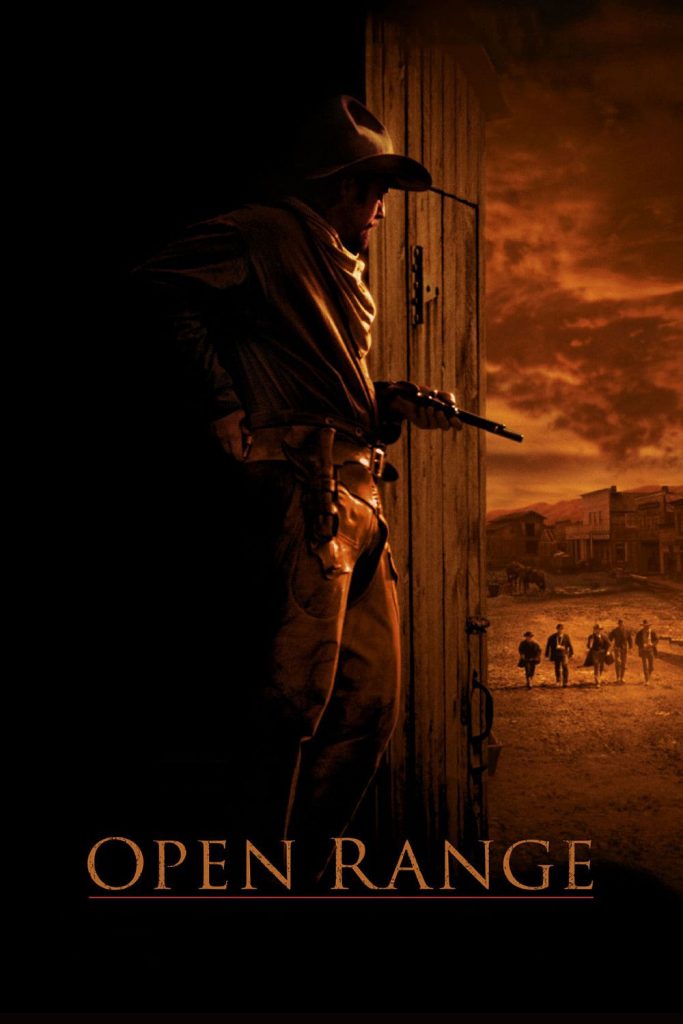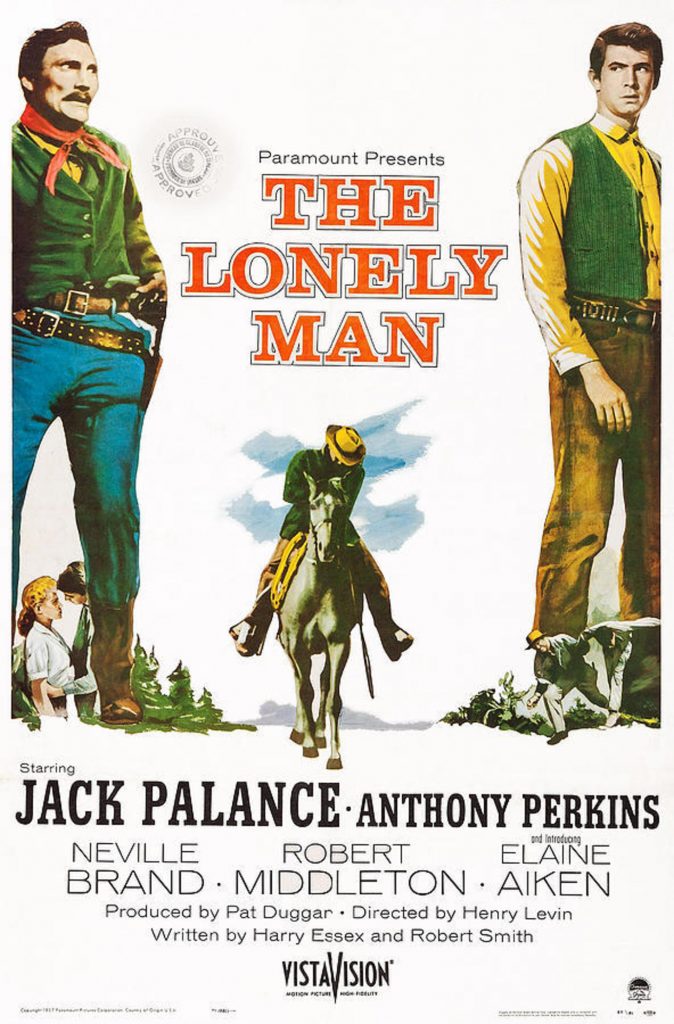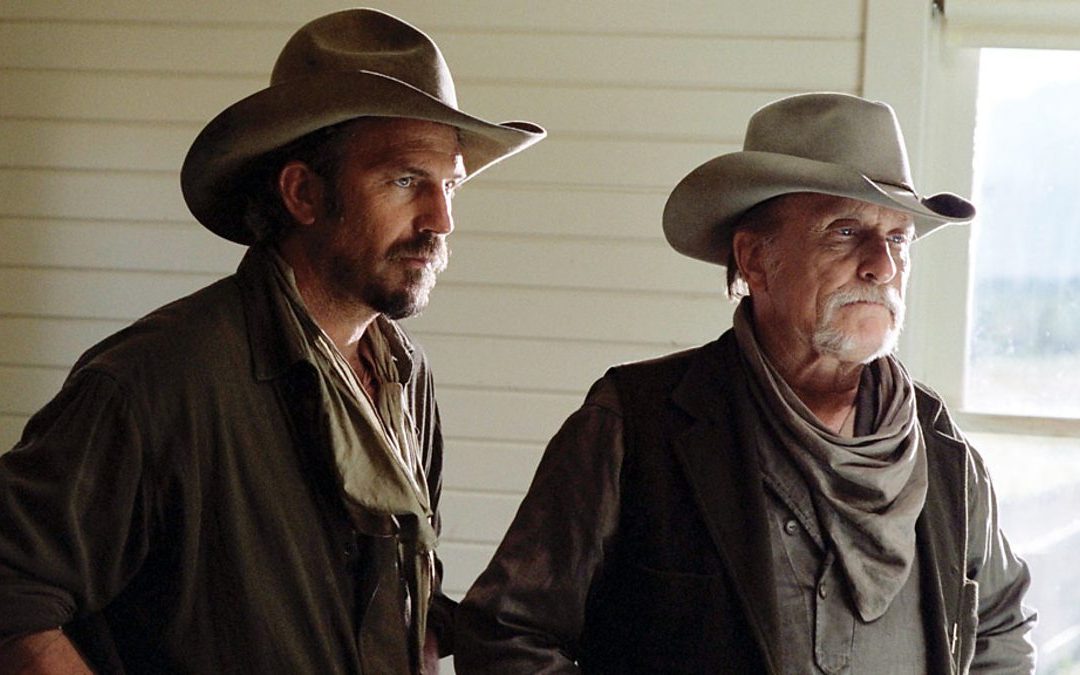Each Monday, I share reviews of Westerns I’m studying to prepare for making 12 Westerns in 12 Months during 2020. I am watching these films not from an audience perspective but as a filmmaker, as a student of the genre.
Week Twenty Three: Open Range & The Lonely Man
Open Range

I first saw Kevin Costner’s Open Range in a theater, loved it, followed by subsequent viewings with the same reaction.
On this watch, I still admire the film but find myself more critical of certain elements, perhaps because of my intense study of the genre.
Most of my complaints come from the last part of the film so if you haven’t seen it, don’t read any further:
1. The kid, Button, showing up in the street is just ridiculous. It pushes things too far and the worst part is that Costner didn’t need it. Having Sue get taken by the one gun-hand is enough but he pushes it way too far when the wounded young man wanders into the shoot out, straining any realism even further when the kid starts shooting and then somehow manages not to get hit or die in a hail of bullets. The shoot out begins and proceeds with a rare sense of realism and clumsiness, something that makes it great, but is spoiled by this development.
2. I also feel that the ending lacks gravity. “Boss” player by Duvall should have died in the final rush. It would have been poignant for him to sacrifice his life in order to get the doctor out of jail. Of course this might mean that Button’s state would need to decrease and to do that with avoiding having Button wander down the street would involve Baxter wounding him in the house, something that I believe would further motivate Sue to come to town in the first place. Anyway, Boss dying would give the film weight. Instead he turns into a superhero at the end and all our heroes walk away without much (if any) lasting consequences from the battle.
3. There are too many endings. First, we have the moment in the saloon in which all the later endings could have been included. Instead, we get a remake of that scene in the garden. Then we get a reboot of the remake on the horses at the end. There’s no sense of brevity in these final moments as if Costner had no sense of restraint or awareness that the three scenes almost do the same thing three times in a row. It’s rough and spoils the economy of the film’s mostly effective second half.
There are some new things I noticed and enjoyed on this viewing. Mostly, I admired the little moments that wouldn’t normally be shown in a Western like Costner not wanting to get his boots wet in the street flood or the candy purchase. This is a humorous addition that seems grounded in reality and reminds me of the great mundane moments Zahler captures in his recent master work Dragged Across Concrete. Of course, if Open Range was made by Zahler, nearly everyone would die and there certainly wouldn’t be three goodbyes.
Seen on Amazon.
The Lonely Man

This film begins with such promise. The start is sparse, bare bones from its visuals to its soundtrack and acting. The first fifteen minutes or so really feel like the title and hint to an unusual Western about isolation, persecution, and of course loneliness.
Then slowly the narrative starts to become unnecessarily crowded. We get a second female interest between the two leads, one we probably didn’t need. We get a second group of outlaws gunning for Jack Palance instead of just one, something the film definitely didn’t need. Finally, we get a subplot about breaking horses which only serves to fill in all those great silences that made the beginning so fascinating, removing any sense of loneliness from the story.
I also didn’t care for the subplot about Palance’s vision. It seems totally contrived. Regardless of this and the other weaknesses, this is one of the actor’s best performances that I’ve seen.
It’s just too damn bad they didn’t keep it simple.
Seen on Amazon Prime.



Unforgiven; touches on several historical issues such as Gun Ordinances, Vigilante/Mob Justice, the time period when Prostitution was legal, and when a hired Gun gets older in life.